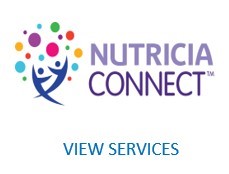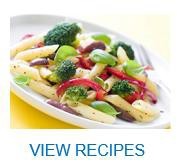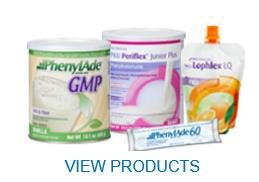Upcycling Nutricia Cans
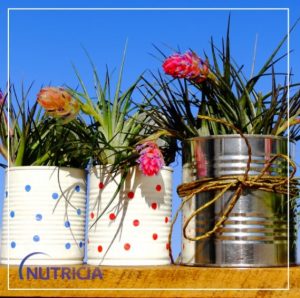
Wait, wait! Don’t throw out your formula can yet!
You can reuse your Nutricia Metabolics formula cans for arts & crafts and more! First, fully clean out the can. Second, follow our easy and fun tips below.
Be sure to clean your cans out thoroughly before reusing them. We recommend wiping out the cans with a damp towel. Let them sit out until they are 100% dry. You’re ready to give them a new life!
Pot for Flowers and Plants
Decorate the outside of the Nutricia can and carefully poke a hole at the bottom of the can to allow for drainage. Fill with potting soil and plant flower seeds or re-pot another plant.
Musical Instruments
Interested in crafting a set of maracas or drums? Take the plastic lid from the can and grab a pair of sturdy sticks and start drumming right away! You can also make a maraca out of Nutricia cans by adding beans or pebbles for a neat sound effect.
Piggy Banks
Turn an empty Nutricia formula can into a cute piggy bank for your child or even for yourself! Paste pictures of your kids onto the outside, and then use a box cutter to create a small rectangular cutout in the plastic lid. Then, start saving!
Decorative Storage
Use old Nutricia cans to hold toys such as building blocks, marbles, or toy cars. You can also reuse formula cans to keep your scrapbooking or craft items in one place.
Re-used Nutricia cans make great storage containers for buttons, ribbons, safety pins, beads and other small items you have lying around. You can even print out pictures of these and then use them to decorate the outside of the can. Customize the outside of the can with printed pictures of what’s stored inside.
Holiday or Birthday Gift Basket
Paint the outside of the Nutricia can for the holiday season or someone’s birthday, and fill with treats, holiday goodies or a personal gift. Think about attaching a handle for easy carrying.
And More: playsets, headband organizers, teacher gifts!
Re-used cans are able to be repurposed into so many crafts and activities for your family. If you have used your Nutricia packaging in a creative way, comment below. We would love to learn from you!
Brought to you by Nutricia North America
© 2020 Nutricia North America
Get Creative with PhenylAde™ 60
Looking for different ways to mix your PhenylAde® 60 Drink Mix? Here are three quick and easy ways to add variety to your day to fight formula fatigue.
Check out these great, 1-step recipes featuring PhenylAde 60.
ICED COFFEE
ICED TEA
ORANGE DRINK
Looking to sample PhenylAde 60 Drink Mix or another formula from Nutricia North America?
REQUEST A SAMPLE NOW
Brought to you by Nutricia North America.
PhenylAde GMP 60 is a medical food for the dietary management of Phenylketonuria (PKU) and must be used under medical supervision.
© 2020 Nutricia North America
My PKU Activity Book
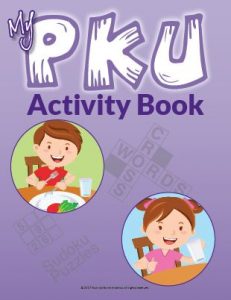 Hello! We hope everyone is safe and well. Staying home with school aged children is not always easy. To help provide an educational activity, we are proud to share a printable copy of My PKU Coloring Book.
Hello! We hope everyone is safe and well. Staying home with school aged children is not always easy. To help provide an educational activity, we are proud to share a printable copy of My PKU Coloring Book.
This activity book is full of fun and educational coloring pages, word searches and other games to keep your school-aged child and their siblings engaged and learning about Phenylketonuria (PKU).![]()
Examples from My PKU Activity Book:
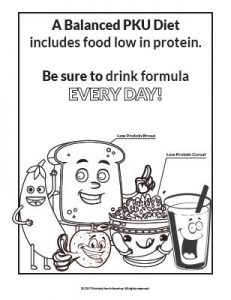
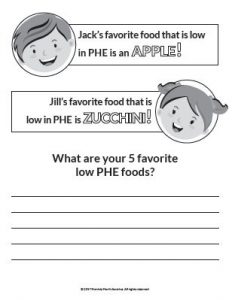

Brought to you by Nutricia North America.
© 2020 Nutricia North America
A message from our CEO at Nutricia North America on COVID-19
March 13, 2020
Dear Nutricia Customers and Community,
At Nutricia, we know that our customers, patients, and their families rely on our medical foods every day. The health and safety of our customers and patients have always been our highest priority. As the COVID- 19 situation continues to evolve, our commitment to supply, quality, and services to you has never been stronger.
I would like to share some of the actions we are taking in the US to continue to deliver on our commitment and provide the very best care.
Production Capability and Supply. We carry several months’ worth of products here in the United States. Our company has confirmed and secured supply of ingredients to provide continuity of on-going manufacturing.
As part of the Danone company, one of the largest food companies in the world, our products are manufactured in the US, UK, and the European Union. Supply has not been affected from any of these locations. Although there are travel restrictions for individuals from Europe, this does not apply to the free flow of commerce and goods, as clarified by the Department of Homeland Security on March 11, 2020.
High Product Safety & Quality Standards. As a global leader in medical nutrition, we operate at the highest level of quality and food safety standards. All our facilities operate at standards beyond the requirements of any country and are regularly FDA inspected. We continue to monitor the situation closely and have been implementing additional precautions as necessary.
Continuity of Service. Considering the current environment, we are taking steps to protect the health and safety of our employees while also maintaining a high level of continued service to our customers. We’ve taken actions to promote flexible work arrangements and our highly dedicated team will continue to support you in every way. Our customer service team is ready to help you. They can be reached at 1-800- 365-7354.
All of us at Nutricia understand this is a stressful time for everyone. You can count on us to continue to provide the best care for you.
Sincerely,

Robert Schnurr CEO, Nutricia North America
Tips for Dining Out on a Low Protein Diet

Dining out can seem tough on a low protein diet, but it’s not impossible. Here are some helpful tips for going out, including what to look out for and how to prepare for a fun time on the town.
Plan ahead as much as possible
If you can, view the menu online ahead of time. Call the restaurant to ask any questions you have. They may even allow you to bring low protein products from home so the kitchen can make a special dish.
Try to leave enough protein allowance
For yourself or your loved one on a low protein diet, try to leave enough protein allowance for your meal. Track breakfast and lunch so that you know how much is left for dinner at a restaurant.
Pro tip: ingredient card
Create a card that lists the foods you or your loved one must avoid, and give it to your server or share with the kitchen staff. Consider listing meat, fish, cheese, eggs, beans, soy products like tofu, seeds, and nuts.
Ask questions and be aware of “hidden protein”
Don’t be afraid to ask questions about what’s on the menu. In recent years, many restaurants have become used to questions about ingredients and dish preparation. You always want to know what’s in your food.
Also, be sure to avoid “hidden protein.” This is when an ingredient contains a high-protein element but often the name does not say it. An example is Caesar Salad Dressing, which often contains anchovies, although you would not know that from the dressing’s name.
FYI: The following ingredients may contain high protein foods:
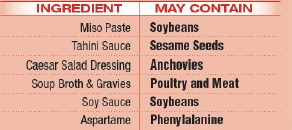
*Phenylalanine is important for those with Phenylketonuria (PKU) and Tyrosinemia (TYR) to track.
If you or your loved one has PKU, we have these tips printed on our Dining Out with PKU education guide. Download your copy in English or Spanish on our Learning Center page.
© 2020 Nutricia North America
Kristin Rapp: Running on Inspiration

12 marathons, 19 half marathons, 100-mile bike rides, and triathlons: Kristin Rapp’s athletic achievements are impressive. What’s more is that Kristin has Homocystinuria (HCU) and manages the low protein diet while training.
How does she do it? What keeps her motivated? We sat down with Kristin to answer this and more.
Kristin was diagnosed with HCU as an infant, and she has successfully managed the condition into adulthood. Kristin currently lives in the Washington, D.C., area. Besides running, Kristin spends her free time acting as Treasurer of HCU Network America, a leading HCU patient group in the U.S.
When it comes to running, Kristin first started in 2006 at a race event in Philadelphia.
“I was active in sports in school and college, so I was interested in giving [running] a try. I started training, and it felt so wonderful after the finish!”
Kristin kept at it. Then, a big turning point came in 2011: “I met someone else with HCU for the very first time,” says Kristin, describing the first national HCU Conference in Colorado.
It was a moving experience for her as she realized that other people with HCU had significant challenges due to the disorder. It got her thinking about how she could further connect to the HCU community.
“I thought I could combine my passion for running with fundraising and inspiring others with HCU.”

What started as a thought has turned into a successful passion project: Kristin started training with a rare disease running and fundraising team, she started a blog about running and HCU, and she completed elite marathons in New York, Boston, and D.C., among other places.
How does she stay motivated mile after mile? Kristin is fueled by the community:

It’s an amazing motivator, and you can tell that thinking about and being inspired by the HCU community is one of the most important parts of Kristin’s race preparation.
As for diet and training, Kristin is used to running and managing the low protein diet after her many years of experience. Some of Kristin’s favorite foods for fuel are bananas and low protein pastas.
Want to read more about nutrition and sports training for athletes with disorders of amino acid metabolism? Check out our introductory sports series on our blog.

For aspiring runners and marathoners with inborn errors or metabolism like HCU, Kristin is cheering them on:
“Talk with your metabolic clinic. Don’t feel limited. There are other young adults who are athletic in the HCU community. We share info on preparing for races.”
As for what’s next for Kristin, she has plans to run the Berlin, Germany, marathon in 2020! Also, she raised $10,000 during 2019 for HCU research and plans to continue fundraising for HCU.
While her race medals are impressive, what’s most inspiring is her commitment to the community. Go, Kristin, go!
Always consult your metabolic healthcare professionals before making any changes to diet and exercise routines.
If you are an aspiring runner with an inborn error of metabolism such as HCU and are looking for a peer to connect with, Kristin is happy to connect. Contact her at KClubbs@hcunetworkamerica.org
For more on Kristin, visit her blog on running and HCU.
To learn more about Nutricia’s products for HCU, visit us at MedicalFood.com.
© 2020 Nutricia North America
PKU & Pregnancy – 3rd Trimester

When you reach your third trimester (after 26 weeks) you are now in the final countdown. With only 3 months to go, you will notice significant changes in your body and PKU diet. For some, your permitted protein intake may increase. Continue to be in close contact with your metabolic clinic.
If you are not in your 3rd trimester and wish to learn more about the other stages of pregnancy, here are links in our series on PKU & Pregnancy:
PKU & Pregnancy – Preconception
PKU & Pregnancy – 1st Trimester
PKU & Pregnancy – 2nd Trimester
In the 3rd trimester, depending on your pre-pregnancy weight, you will have gained roughly 11-40 pounds by the end of your pregnancy. From now until birth, your baby will grow from the size of a large butternut squash to a small watermelon. Continue to work closely with your metabolic clinic as only your clinic can provide the best guidance for you and your baby.
Now you are getting closer to the exciting day. As your baby grows you may experience some discomfort such as reflux, heartburn or feeling full quickly when eating.
If heartburn strikes, here are some tips to help:
- Avoid foods that may increase risk of heartburn, such as caffeine, peppermint, spearmint, soda, spicy or acidic foods
- Avoid eating large meals; try small frequent meals spread throughout the day
- Limit meals close to bed time
- Sleep with you head at an elevated angle
- Consider a ginger candy or herbal tea
If you have difficulty consuming your formula, here are some tips to help:
- Divide your current PKU formula into small frequent portions throughout the day
- Ask your metabolic dietitian if a lower volume PKU formula is appropriate for you
- Drink your formula before or between meals to be sure you are consuming your full recommended amount
You are almost there – Stay on Diet!
You have been working hard on maintaining your PKU diet. It is important to stay on diet once you baby arrives, but it may be difficult with the demands of a newborn. Now is the time to begin discussing a plan with your metabolic clinic and family to remain in control of your phenylalanine (PHE) levels once they baby arrives.
Here are some suggestions:
- Teach your significant other, family or friends how to prepare your formula (the way you like it) so they can help in the first few weeks.
- Share your favorite low-PHE recipes with family and friends so they can prepare some meals for you.
- As you begin preparing for the baby cook some low-PHE meals and freeze for easy reheating once the baby arrives.
- Write shopping lists for friends and family so they know what fruits, vegetables and other items to pick-up for you.
REMINDER – Keep Sending in Blood Spots!
Request a Nutricia Maternal PKU Starter Kit for more helpful tips and tools to help get you ready for this special time in life.
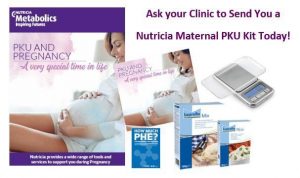 All products shown are medical foods are for the dietary management of Phenylketonuria (PKU) and must be used under medical supervision. Please consult your metabolic healthcare professional prior to making any changes to your PKU diet.
All products shown are medical foods are for the dietary management of Phenylketonuria (PKU) and must be used under medical supervision. Please consult your metabolic healthcare professional prior to making any changes to your PKU diet.
©2020 – Nutricia North America
PKU & Pregnancy – 2nd Trimester

Week 13 through 26 is considered the second trimester of your pregnancy.
View PKU & Pregnancy – Preconception Blog Here
View PKU & Pregnancy – 1st Trimester Blog Here
During this time, you will continue to work closely with your clinic as only they can provide the best guidance for you and your baby
In the 2nd trimester, depending on your pre-pregnancy weight, you will now start gaining about 0.5 – 1 pound per week. During this time period your baby will grow from the size of peach to about the size of an acorn squash.
In the 2nd trimester you may notice the return of your appetite and a desire to eat more. It is still extremely important to keep your phenylalanine (PHE) levels in control, so be sure to continue to work closely with your metabolic dietitian and have a meal plan in place.
If hunger strikes go for your formula first!
You may also benefit from preparing portioned out low-PHE snacks for the week. This may help reduce temptations to grab foods which are not a part of your meal plan when you find yourself hungry and craving a snack.
Here are some pre-portioned low-PHE snack ideas:
- Make single-serve bags of low protein pretzels, popcorn and cereal
- Consider gluten-free items*
- Cut up fresh fruit or fresh pressed fruit snacks
- Sliced vegetables; such as cucumbers, peppers, zucchini, etc.
- Portioned out bite-size veggies; such as baby carrots, cherry or grape tomatoes
- Bake and freeze low protein bread, biscuits, muffins, cookies and more – find recipes here
- Prepare your favorite low-PHE soup recipes in bulk and freeze in single-serve units – find recipes here
GET READY!
During this trimester you MAY have an increase in your daily PHE tolerance, which means increased food options. Your metabolic dietitian will work closely with you and monitor your blood PHE, but remember PKU formula is still your main source of PKU-friendly protein for both you and your rapidly growing baby.
**Important!** Be sure to read labels and check serving sizes when planning your snacks. PHE content of foods can vary by brand. Remember that not all foods that are gluten-free are low in protein. For more information on finding the PHE content in commons foods, check out HowMuchPHE.org.
Request a Nutricia Maternal PKU Starter Kit for more helpful tips and tools to help get you ready for this special time in life.

All products shown are medical foods are for the dietary management of Phenylketonuria
(PKU) and must be used under medical supervision. Please consult your metabolic healthcare professional prior to making any changes to your PKU diet.
© 2019 – Nutricia North America
Happy New Year!
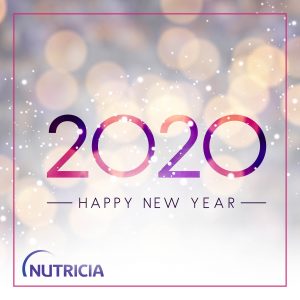
The start of a new year is a great time to re-commit to better diet management.
Improving your metabolic diet is different for everyone. It can range from calling your clinic for the first time in years to making simple improvements such as:
-
Eating more fresh fruits and vegetables
-
Drinking the full amount of formula
-
Finding a formula you enjoy drinking
-
Sending in blood spots more frequently
-
Trying new low protein recipes
Nutricia is proud to offer support services to help you achieve some of your dietary goals.
Our Nutricia Connect™ program is here to provide support at various stages of life’s journey. We offer an array of low protein recipes, educational tips and resources, and a team of professionals who can assist you or your loved one to get back on-diet.
Additionally, Nutricia’s team of formula coverage specialists can review your insurance and answer any questions you may have about formula coverage.
Connect with them today by emailing Coverage@Nutricia.com or by calling 1-800-605-0410.
Improve Your Metabolic Diet Today
About Us:
Nutricia Metabolics provides a variety of formula options for inborn errors of metabolism, including Phenylketonuria (PKU), Maple Syrup Urine Disease (MSUD), Tyrosinemia (TYR), Homocystinuria (HCU), Urea Cycle Disorders (UCD), Glutaric Aciduria Type-1 (GA-1), Isovaleric Acidemia (IVA), Propionic Acidemia (PA), Methylmalonic Acidemia (MMA) and Fatty Acid Oxidation Disorders (FAODs). Learn more at www.MedicalFood.com
NOTE: All Nutricia Metabolics products are medical foods and must be used under medical supervision. Always consult your metabolic healthcare professional prior to making any changes in your metabolic diet plan.


